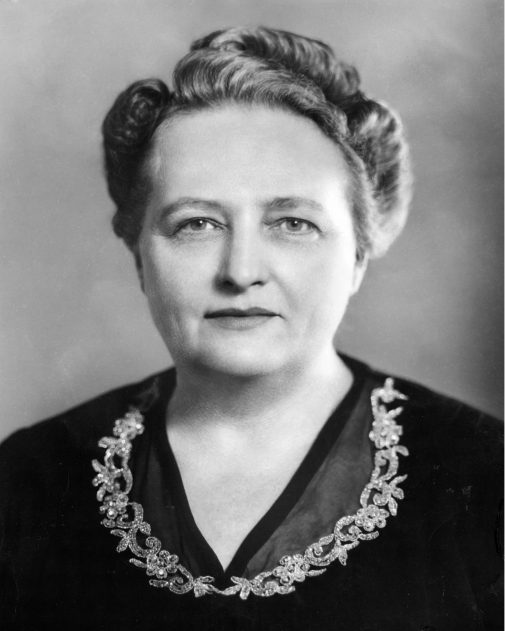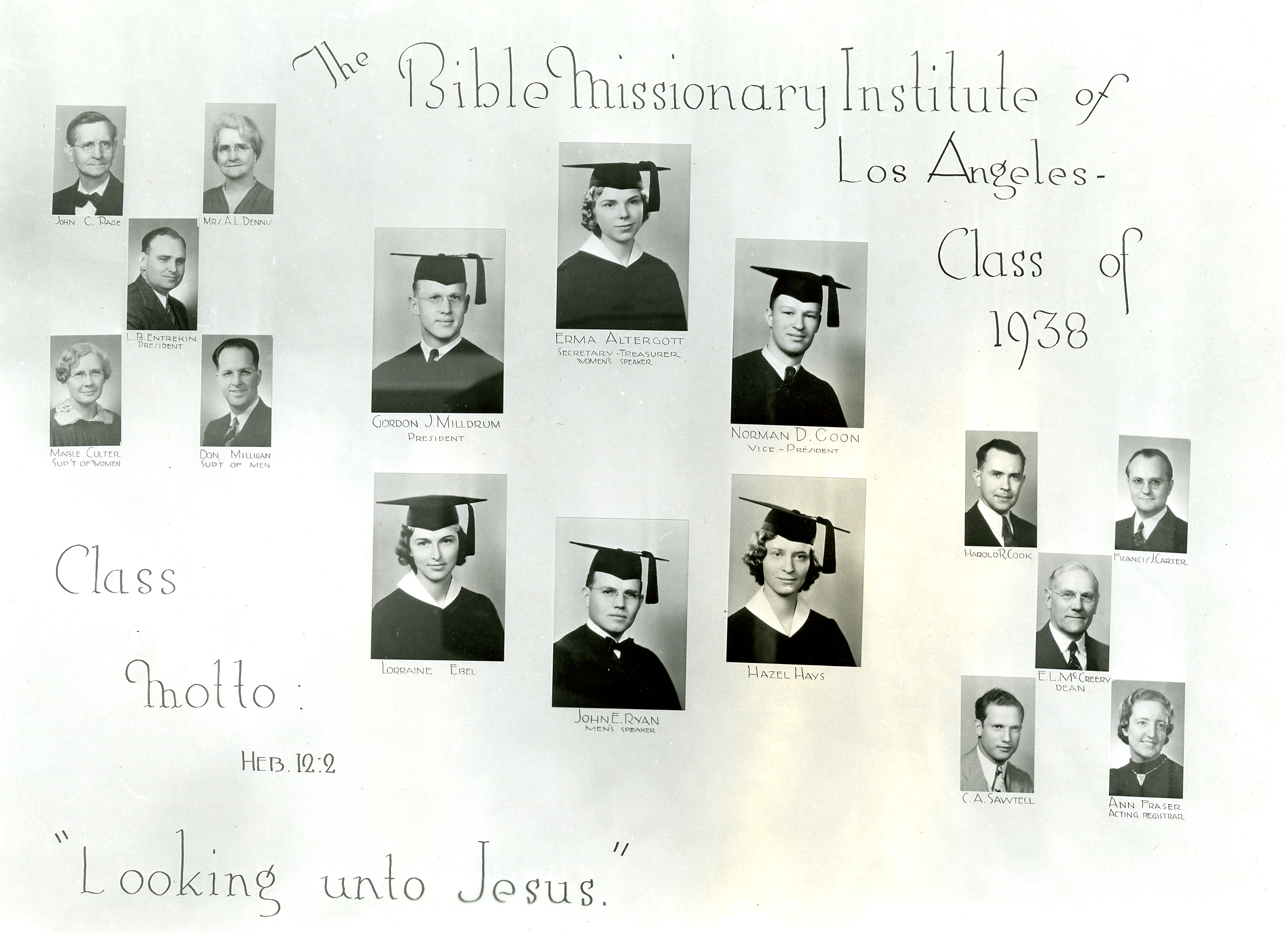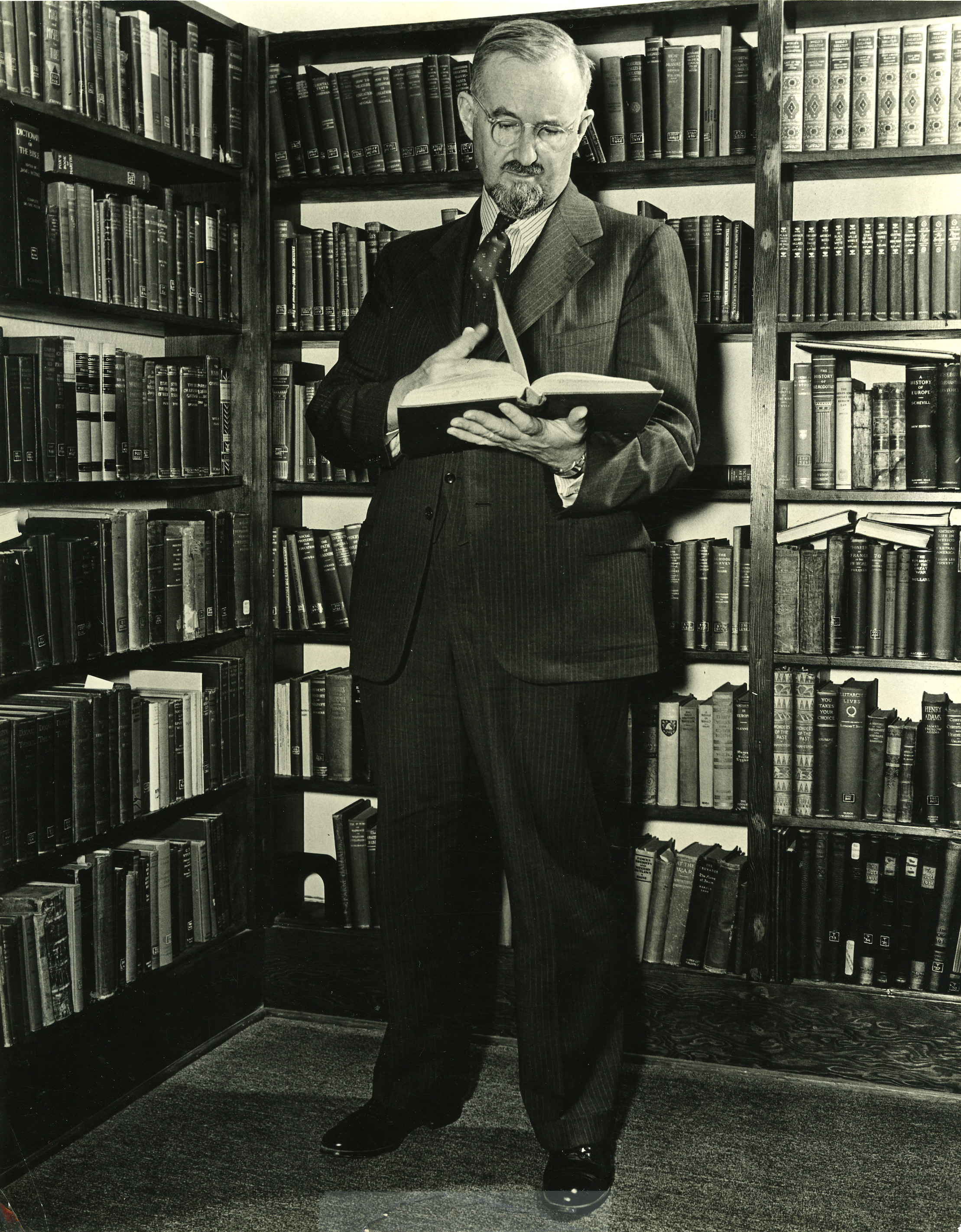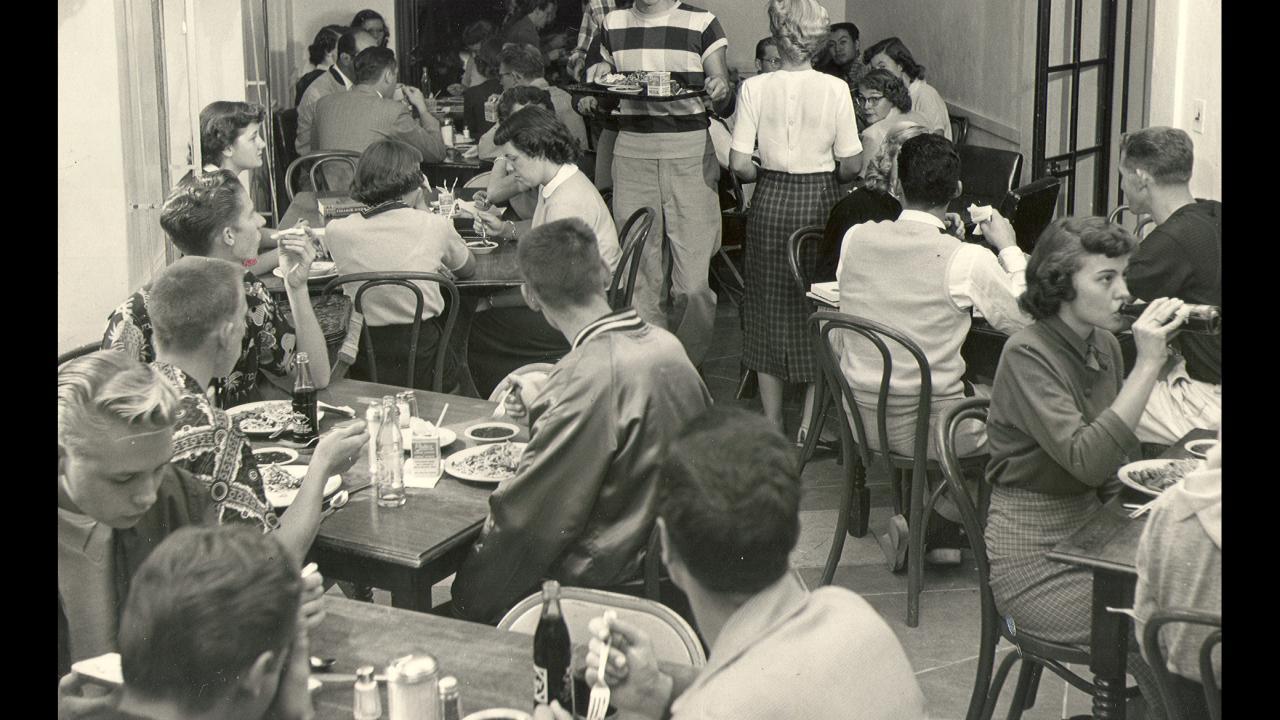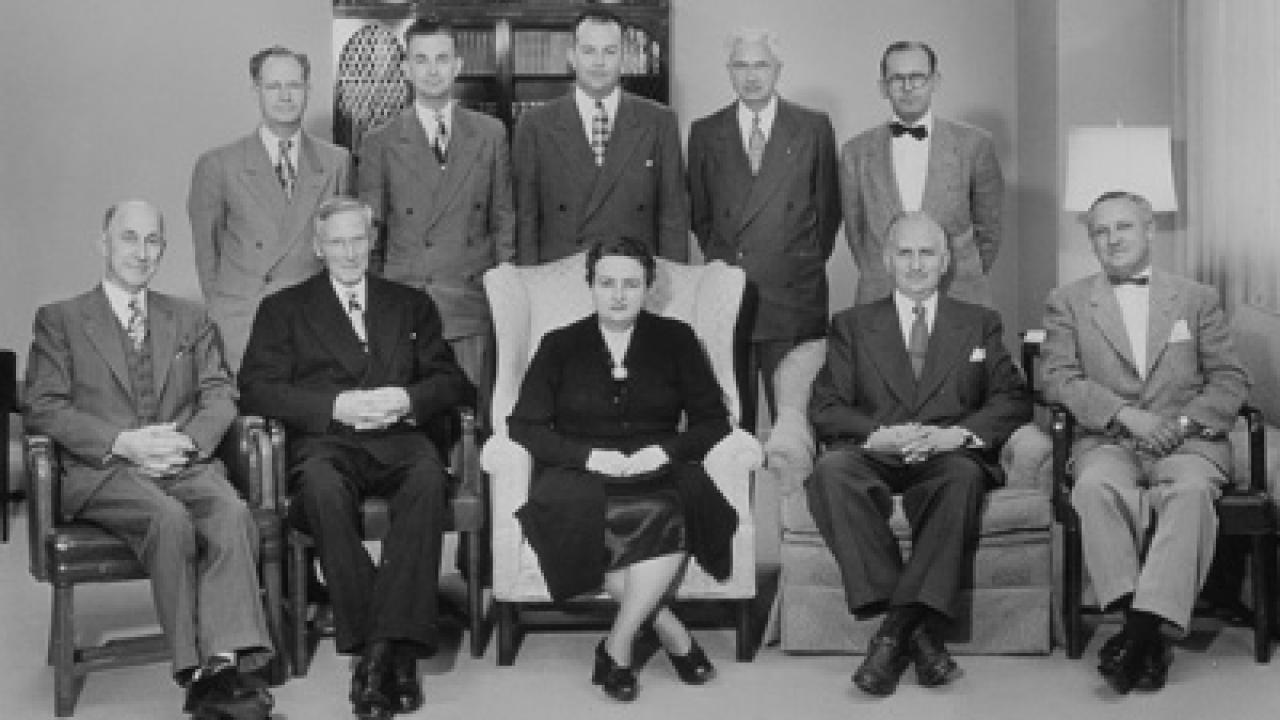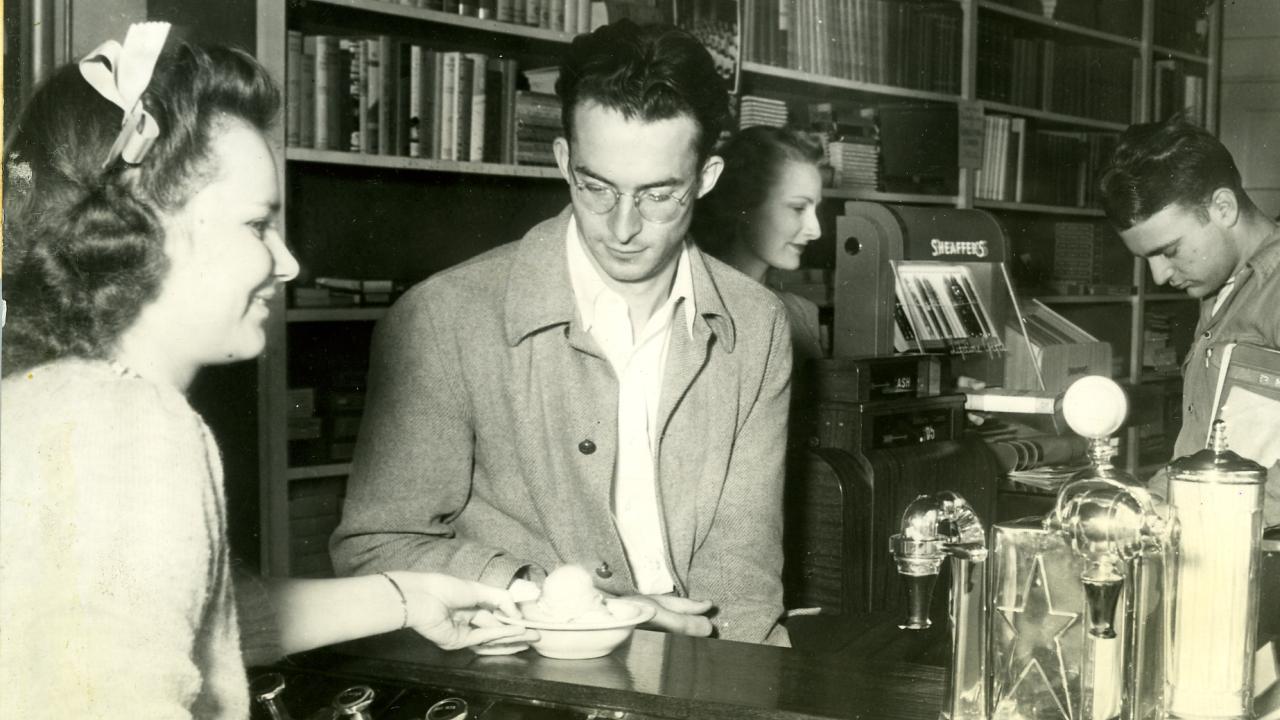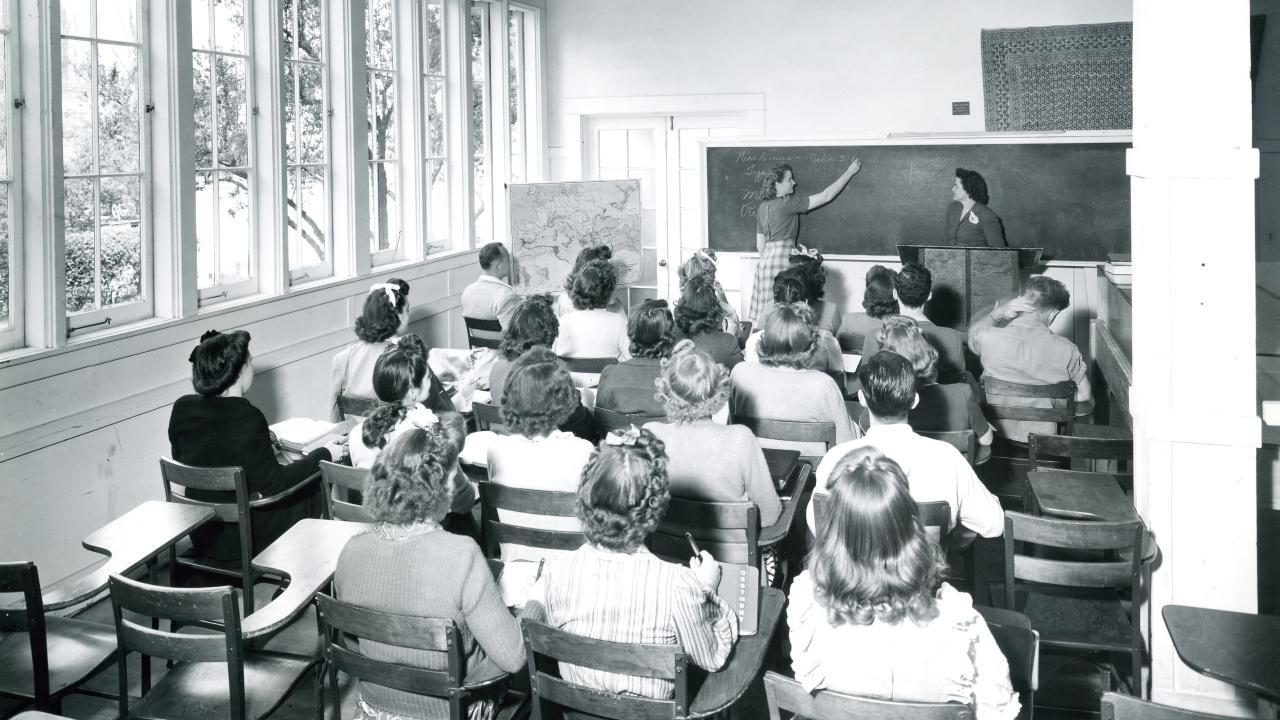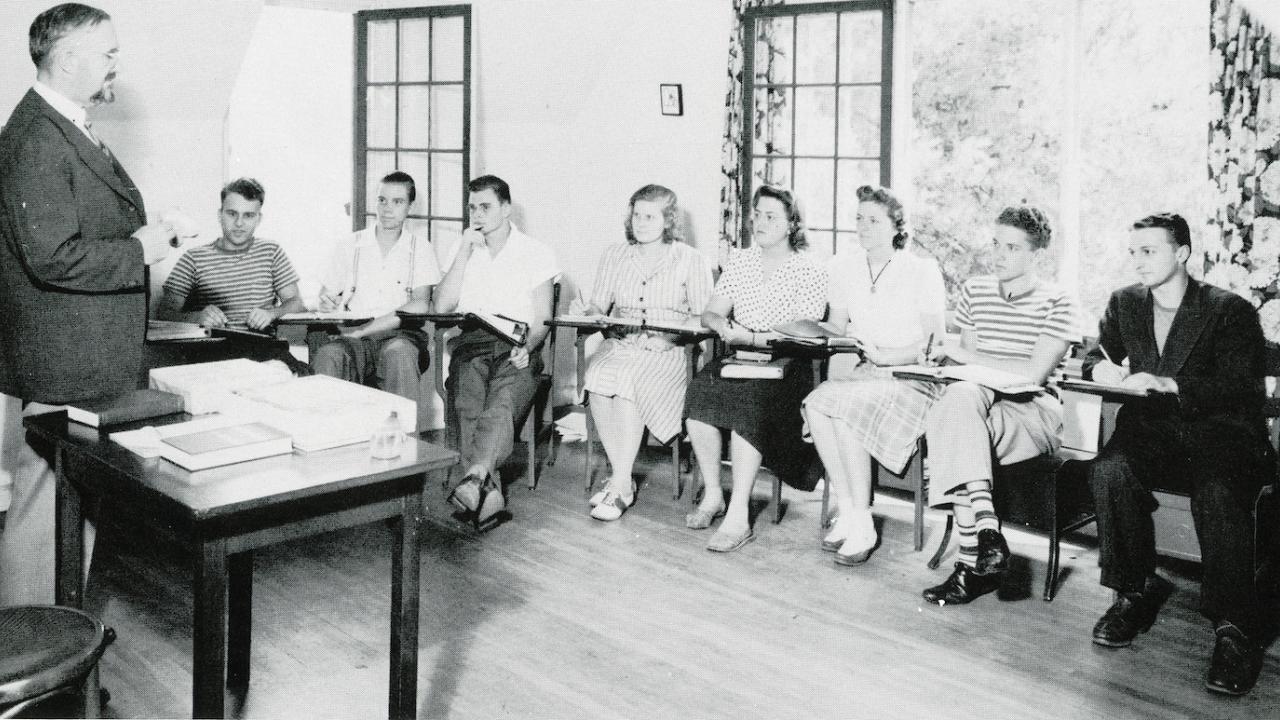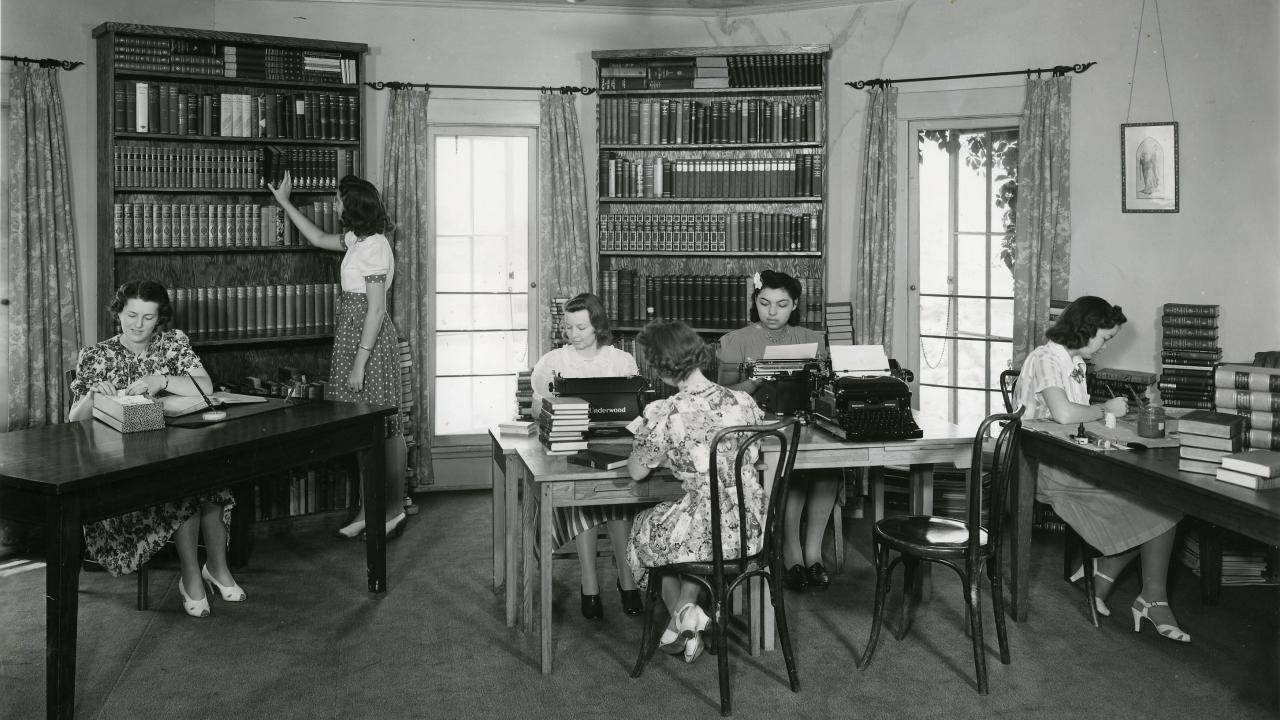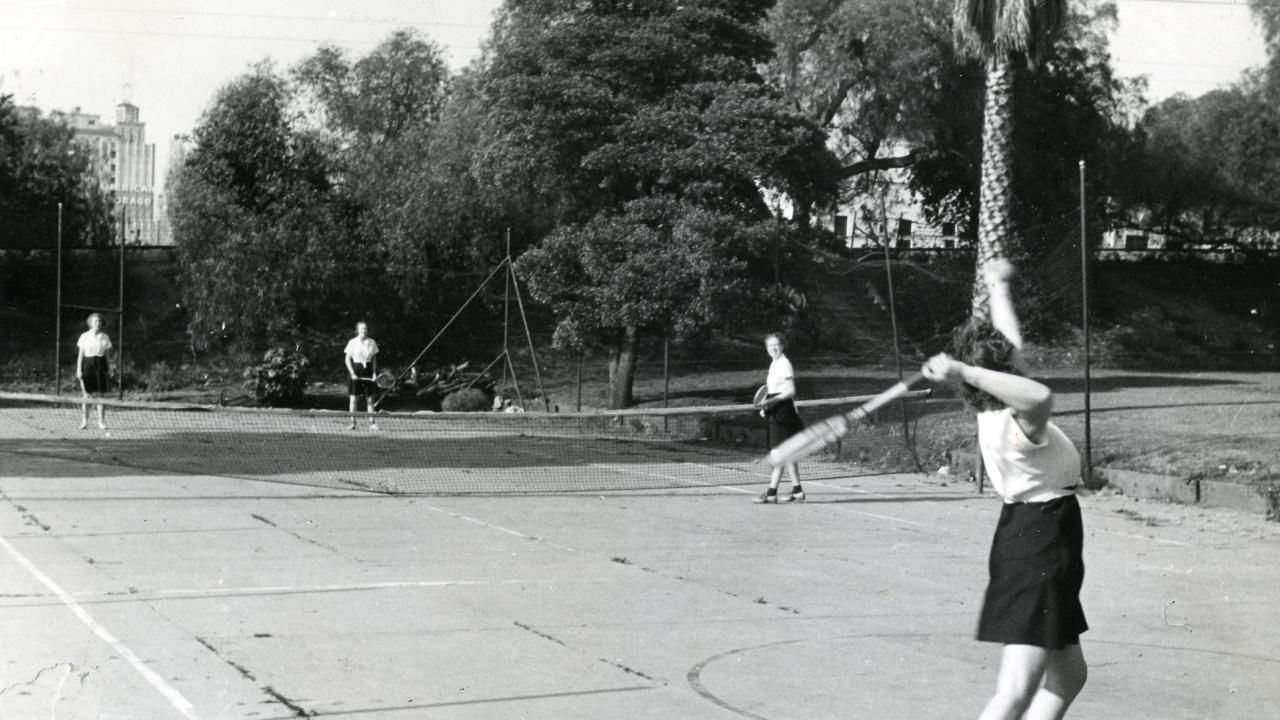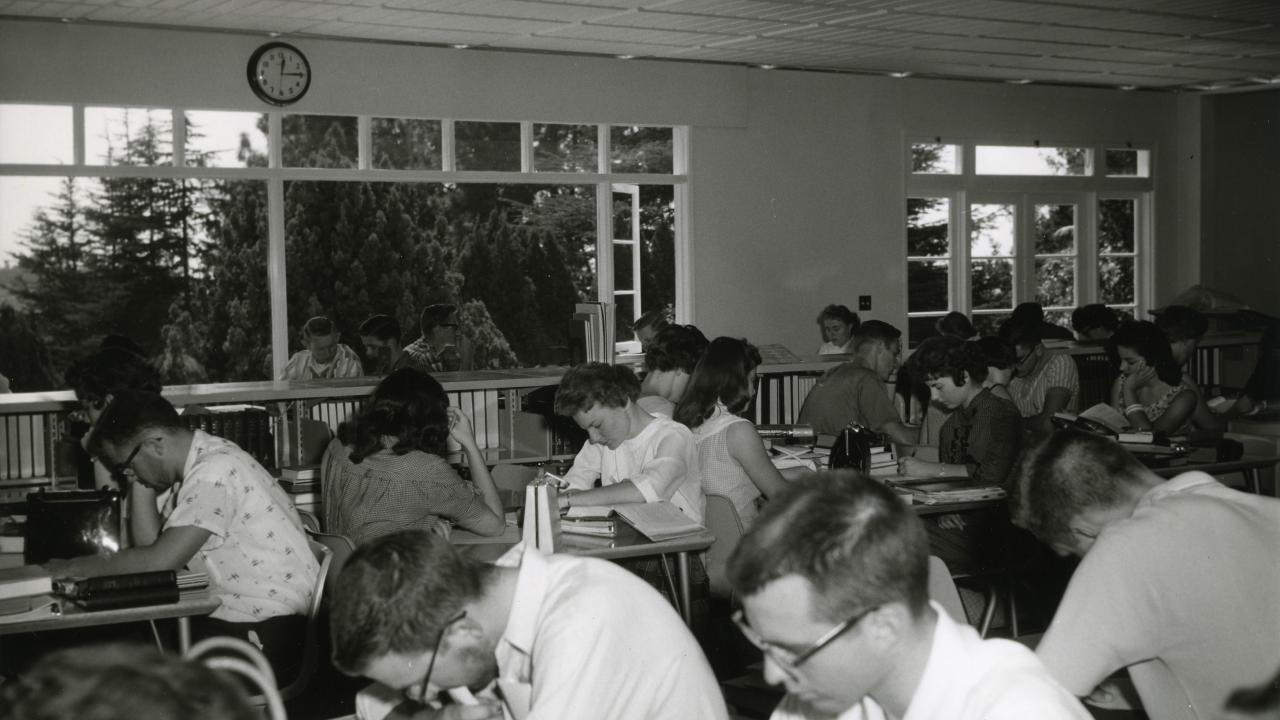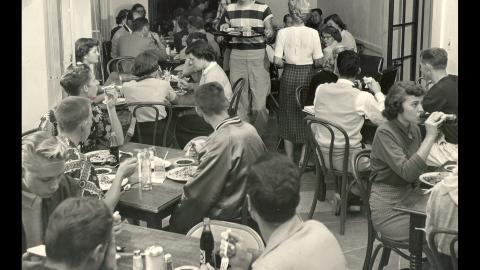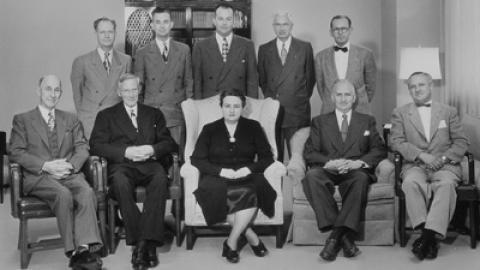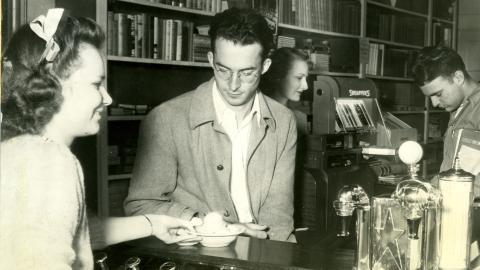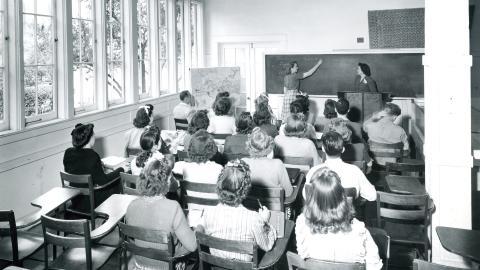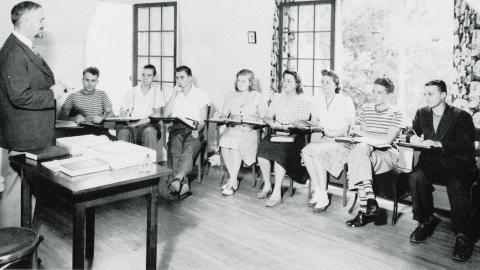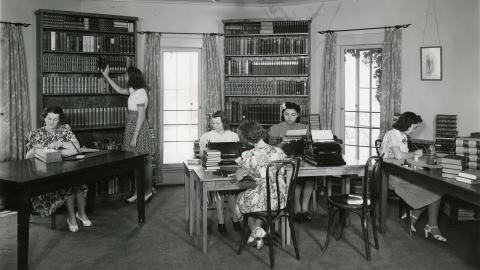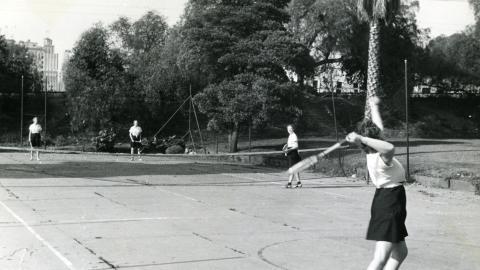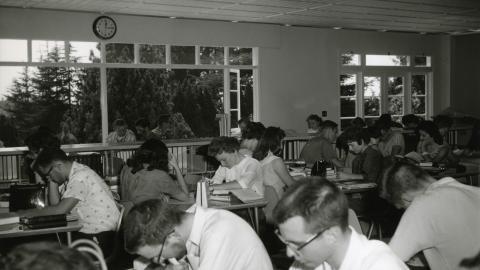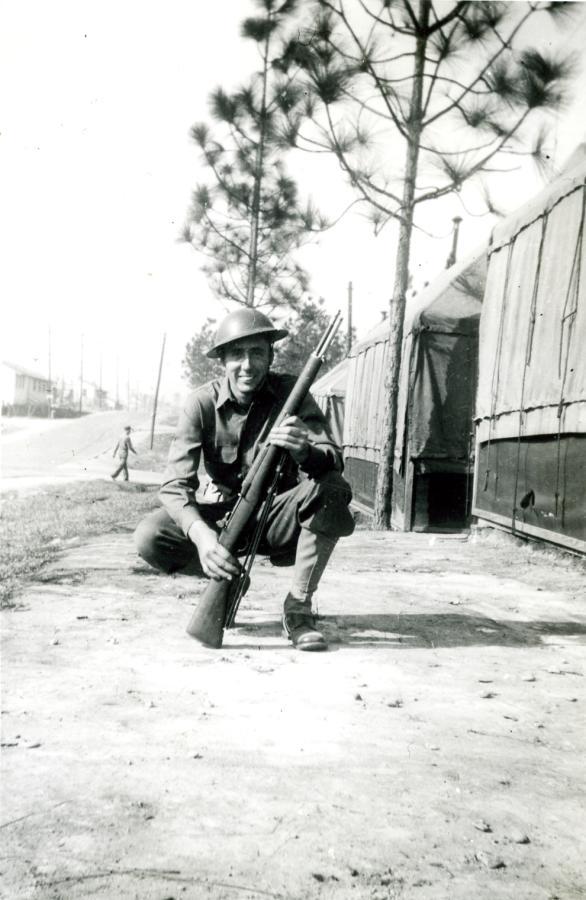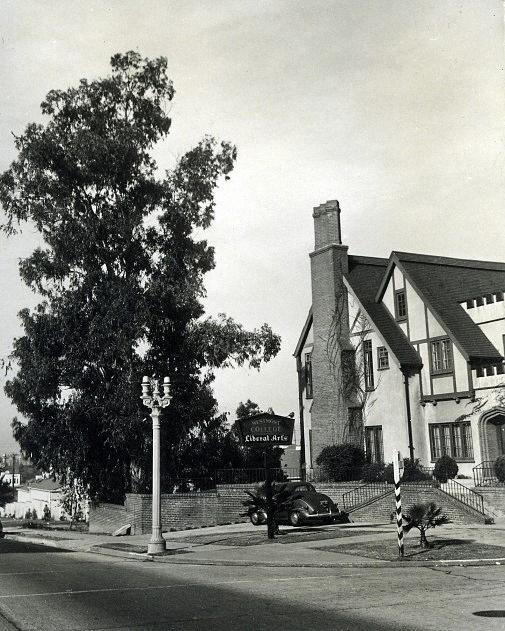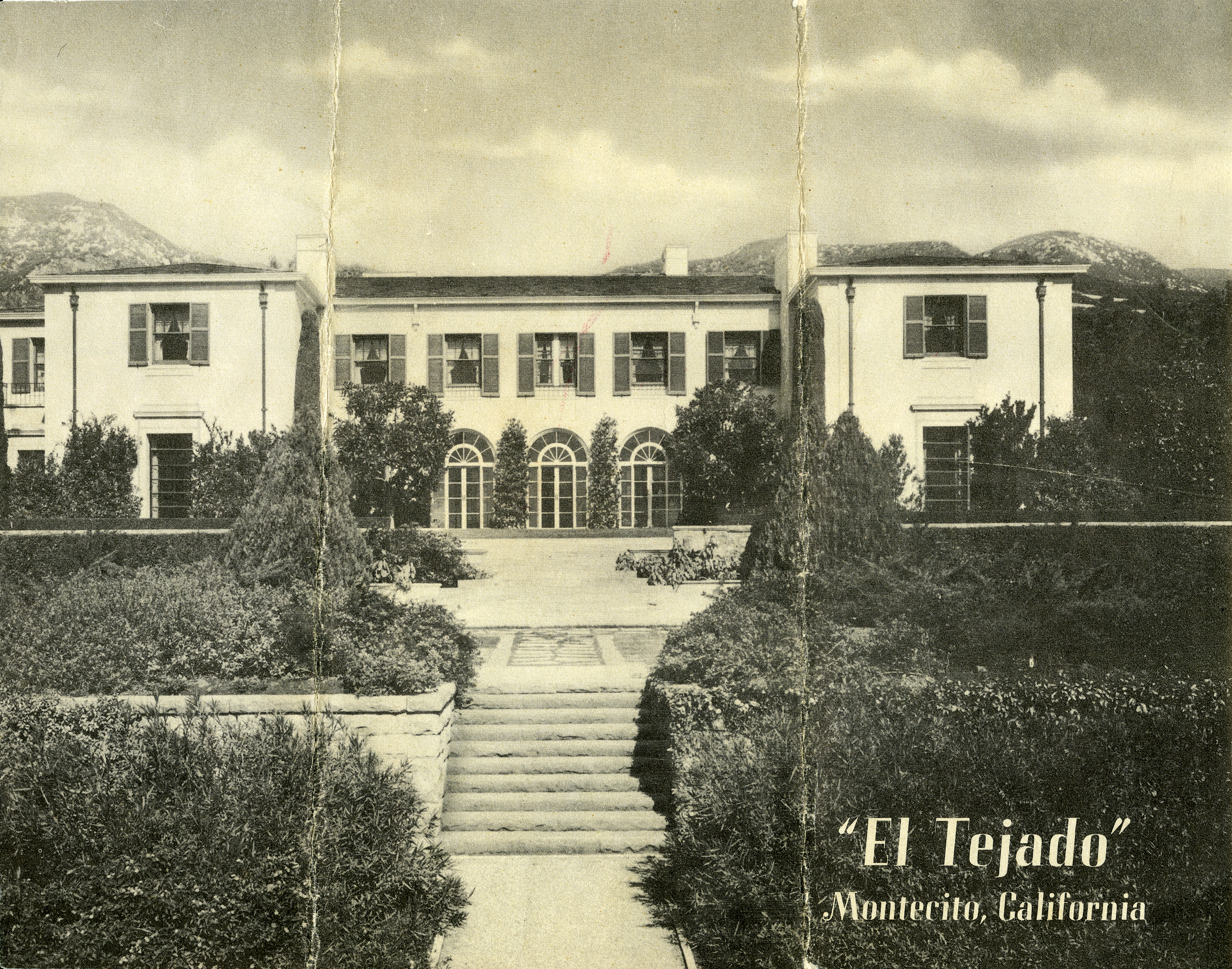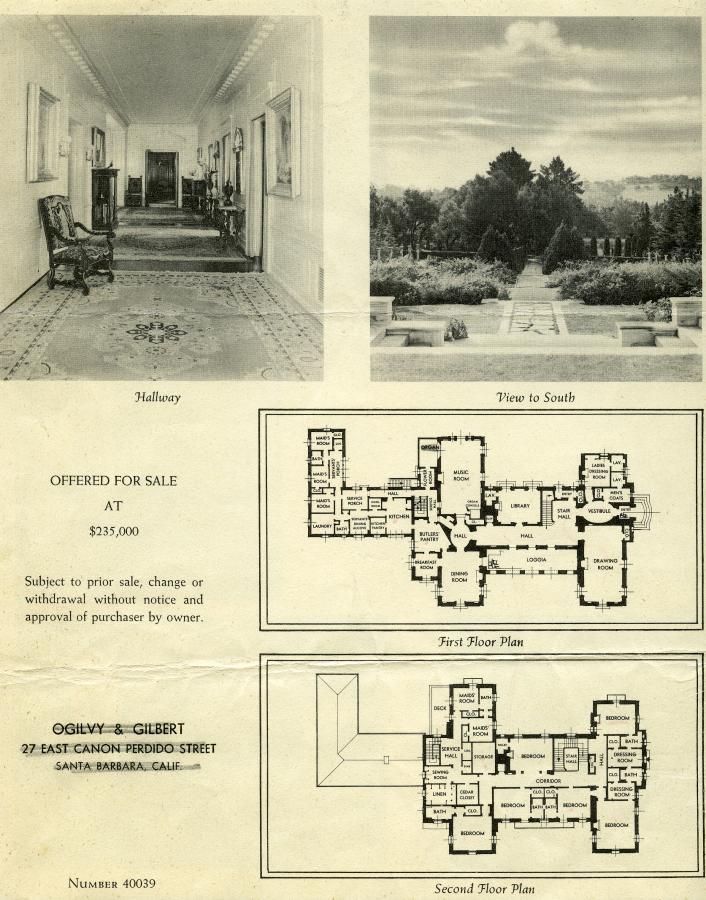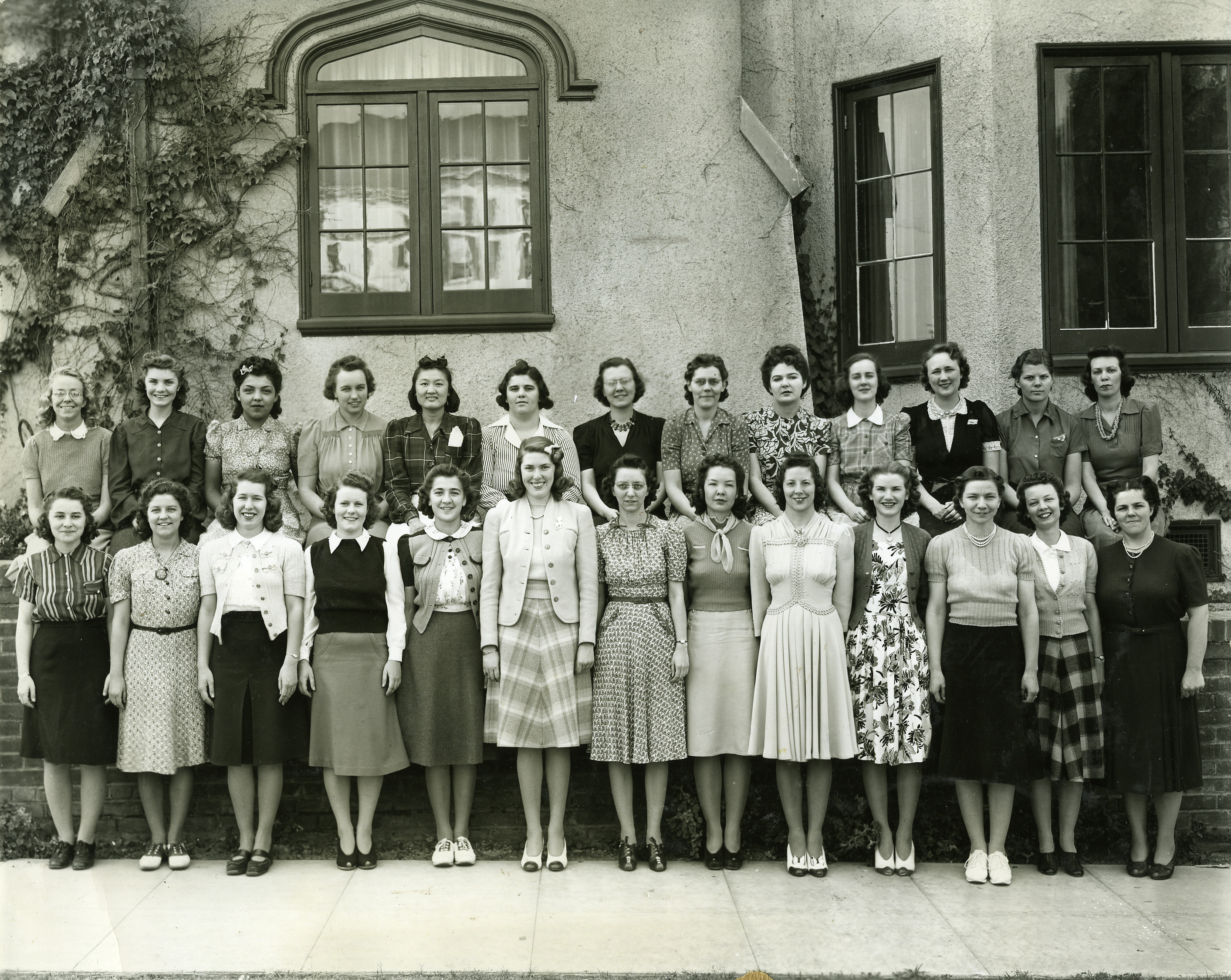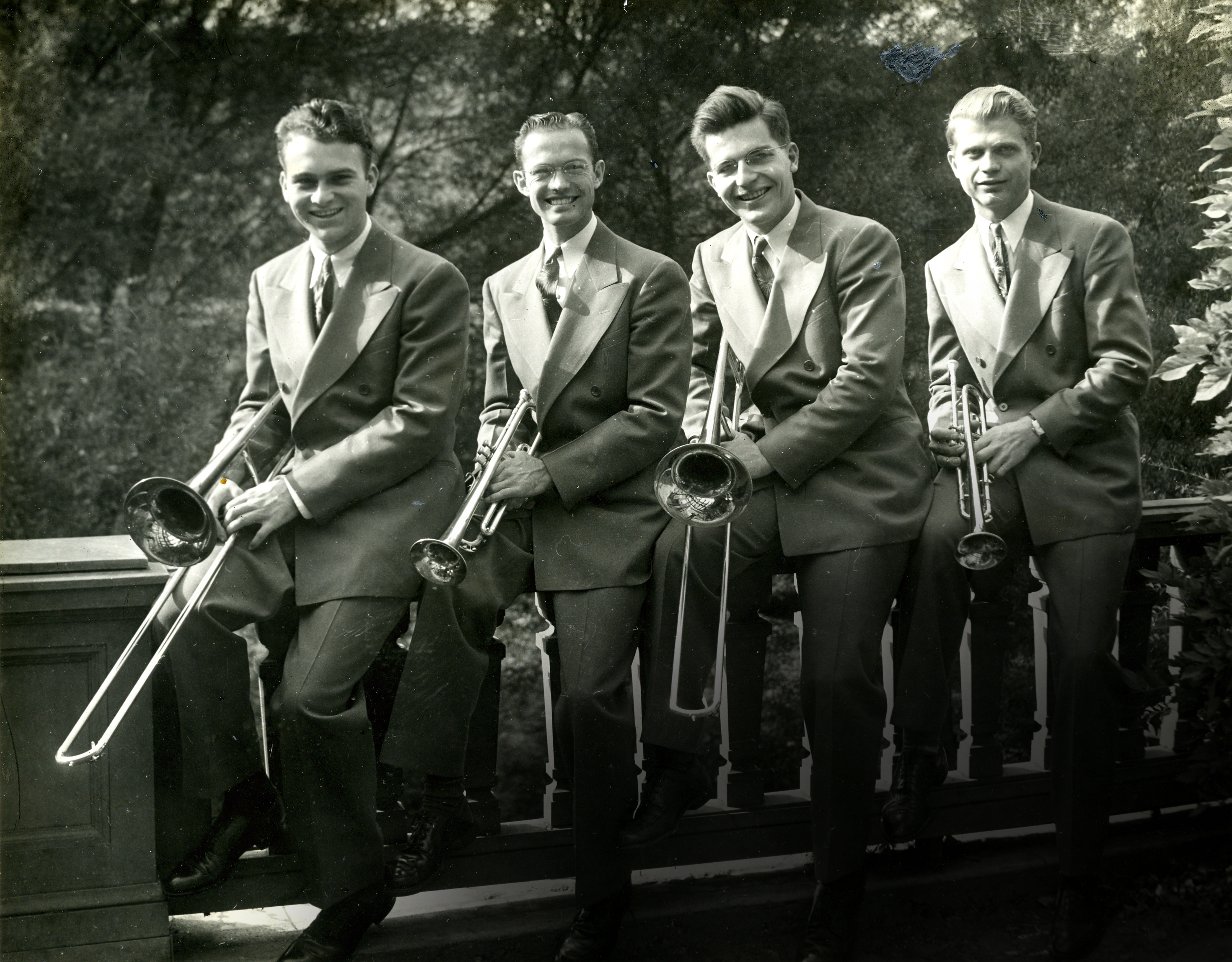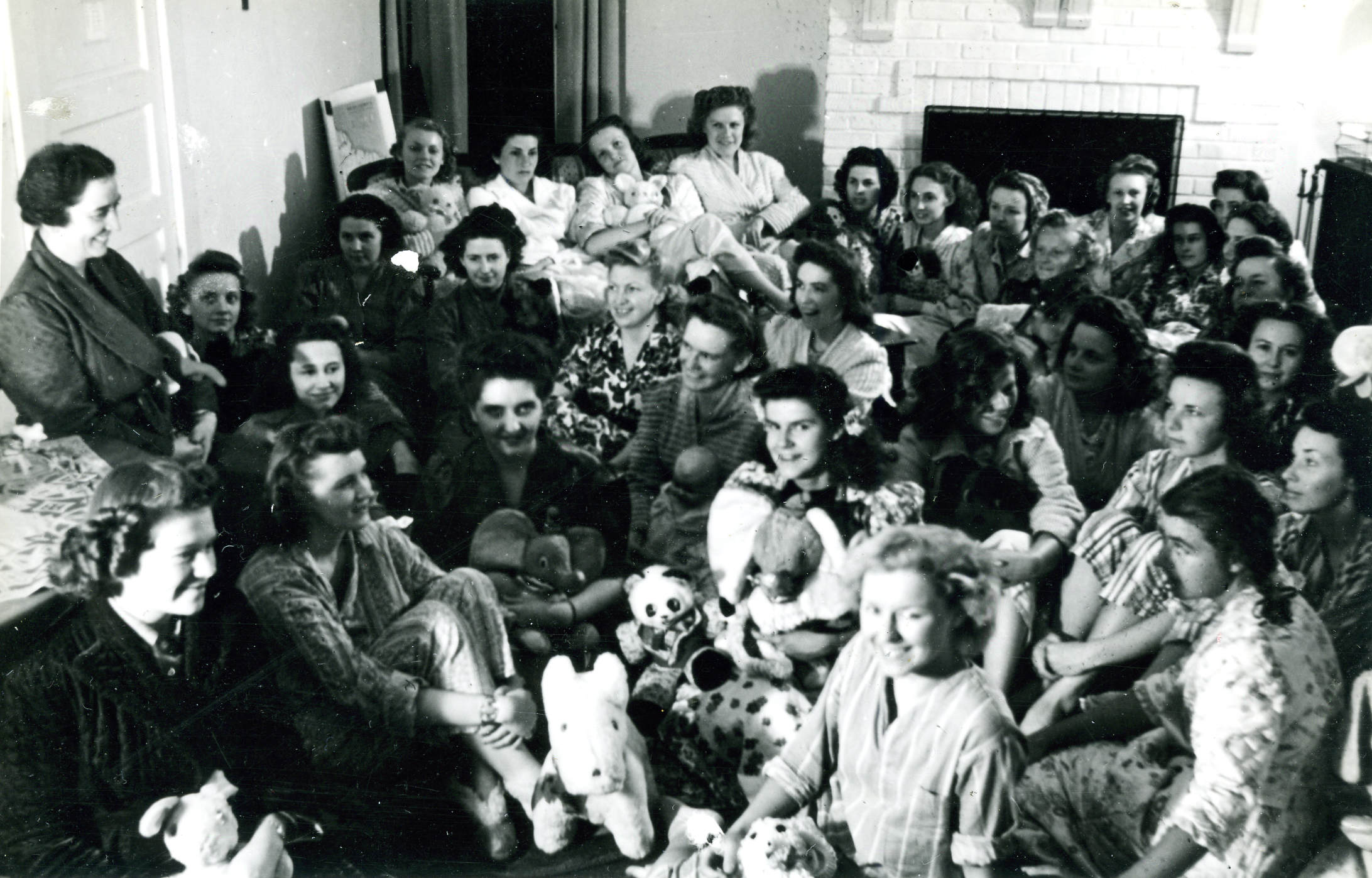Westmont Magazine The First Decade
Westmont’s founders chose a challenging time to establish a college. In 1937, the Depression lingered, and the world moved closer to a global war. How did the college survive with no endowment, a small enrollment and inadequate facilities? Faithful, committed people felt called to invest their lives and resources in Westmont, convinced that God would guide its growth. For 85 years, the community has thankfully proclaimed, “Great is thy faithfulness.”
Ruth Kerr
BMI's First Graduating Class
Wallace L. Emerson
Ruth Kerr and the Still, Small Voice
The vision for Westmont began with Ruth Kerr, an unusual woman for her time. Her husband, Alexander, died in 1925, and she assumed his position as president of the Kerr Glass Manufacturing Company in 1930 while raising their six children. Under her guidance, the business flourished, and Kerr canning jars became a household name.
Convinced of the need for a Bible institute that didn’t require the usual $150 deposit, Kerr decided to start one herself. “In August of 1937, God awakened this Christian woman out of a sound sleep one night, and the still, small voice said, ‘Now is the time to open the school.’”
The next morning, the Reverend Leland Entrekin shared a similar burden with Kerr. Then three nationally known Bible teachers who had left Biola offered to teach at the new school: Elbert McCreery, John Page and Anna Dennis.
The Bible Missionary Institute (BMI) opened in the fall of 1937 at the First Fundamental Church (later Westlake Calvary) in Los Angeles with 72 students and 16 faculty and staff. Many students, like Margaret Fraser Anderson ’40, transferred from Biola. She valued the Bible teaching she received at BMI.
“Mrs. Anna Dennis was an absolutely marvelous teacher, and her dispensational teaching I will never forget. ... [John Page] was just a wonderful teacher. ... He was funny ... and he loved students. ... [Dr. McCreery] made a tremendous impact on my life, not just as a teacher, but as my personal friend. ... He would make doctrine understandable by breaking it down into individual doctrines in the Bible.”
Margaret met her husband, Burns ’40, when Page “put them together” over the kitchen sink after a choir performance. BMI changed Burns’ perspective. “It was broadening to find out that there was a bigger church out there in the world ... school was a completely soul-changing experience for me. I woke up to the fact that you didn’t have to belong to a certain little group of people. ... But anyone who acknowledged Jesus Christ as Lord could be my brother.”
The school struggled financially, and the founders began to wonder if Los Angeles needed two Bible institutes. In January 1939, they added a junior college curriculum and changed the name to Western Bible College.
The Vision for Westmont College
Then, in Kerr’s words, “In May, 1939, we were led of the Lord to contact Dr. Wallace L. Emerson, dean of students at Wheaton College, to come to us as president of a proposed four-year liberal arts college built on a sound Christian basis, God having given us the vision for this larger work.”
That summer, Kerr purchased the campus of the Westlake School for Girls on South Westmoreland Avenue in Los Angeles and gave it to the college as a memorial to her late husband. The property included six buildings and four and one-half acres.
In the spring of 1940, Emerson accepted Mrs. Kerr’s offer. He later explained, “I agreed to come on her request with a proviso that I would have the hiring and the firing of the faculty and nothing was to interfere with that. ... I told Mrs. Kerr that I was in no way interested in anything but a liberal arts college.”
So Western Bible College became Westmont College. Why “Westmont”? Emerson had suggested “Trinity,” but students objected. He recalled that someone on the board coined “Westmont.” “Well it’s out west and it’s in the mountains. ... Westmont became the name for no rhyme nor reason except that it was a name that sounded all right and had a little significance as far as location was concerned.”
Classes began in the fall of 1940 with 33 professors and 85 students. W. W. Catherwood, the pastor of the First Baptist Church in Riverside, became the first president of the board, a position he held for six years. Kerr served as secretary-treasurer.
Paton Yoder, a history professor during the 1940s, came with “a lot of uneasiness and also a lot of expectancy, and we found that same spirit at the college — a great spirit of expectancy but also a concern for the future.”
Margaret Bailey Jacobsen Voskuyl, another professor, remembers meeting Westmont Trustee John Bunyan Smith. “[He] grabbed my hand and he held it tight, and he said to me, ‘Young lady, do you subscribe to the doctrinal statement of Westmont College?’ It made me realize how deeply some of those people felt ... [about] what they were founding.”
Emerson brought a tremendous vision to the new college. He wanted to establish a Christian institution that rivaled the best secular colleges and universities in the country.
Voskuyl remembered how Emerson presented Westmont. “This was to be a school that would combine faith and academic excellence for our generation. It was to be a school, not a Bible school, not a seminary, but a Christian college to develop Christian leaders, and it was a joy to be a part of something that had so much basic vision.”
A Concern for Careful Scholarship
The statement of purpose in the first Quarterly Bulletin reflects Emerson’s views. “In every step which has led up to the present organization of Westmont College, the goal has been careful scholarship, sound doctrine, and consistent Christian living. Westmont College is interdenominational and evangelical, believing that genuine scholarship is not only compatible with, but necessary to, the Christian viewpoint.”
Emerson wanted to offer as broad a curriculum as possible. Yoder recalled developing the catalog. “I sent him quite an extensive list [of courses] and told him I was sure we shouldn’t put all of them in and maybe he would like to use some discretion and decide. ... He put them all in. ... So perhaps that ... illustrates the anticipation and the vision Dr. Emerson had.”
In five years, Elinor Berg, the librarian, collected 19,000 second-hand volumes at a cost of $30,000. Used book dealers agreed to give books to Westmont and receive payment when money became available. Berg attended estate auctions where she bid books at a “ridiculously low price,” sometimes paying for them herself. She also taught students to bind magazines. According to biology professor Cora Reno, they bought only the best books. “We couldn’t order something ... because it appealed. It had to have a high rating.”
To become accredited, Westmont needed a good library and a broad curriculum. As Voskuyl recalls, “There was no question in Dr. Emerson’s mind that ... they were going to seek accreditation as soon as possible. ... We weren’t going to fool around and have a non-academic institution now!”
But when Emerson applied for accreditation in 1943, Westmont fell short in four areas: inadequate financing, the “peculiar religious requirements for the faculty and the nature of the financial arrangements with them,” the inability of professors to teach all the courses in the catalog, and an incomplete library. However, Emerson’s determination to gain accreditation set an important precedent.
The Power of Prayer
Westmont suffered from the lack of financing. Since faculty came on “faith,” the college didn’t guarantee their salaries. Professors got paychecks when funds were available, and wages not paid by the end of the year were canceled. Few donors supported the college; Kerr gave 75 percent of the gifts received during the early years.
Yoder remembered “when it was discovered that our first checks wouldn’t be forthcoming ... we found for the first eight years we never knew how much of our salary was coming and when it was coming.”
How did faculty survive? Emerson recalled, “They were beyond all praise. ... I asked ... Jane McNally ... ‘Jane, are you getting enough to eat?’ And she said, ‘Well I’m getting one good meal a day.’ I said, ‘Are you sorry you came?’ And she said, ‘No ... I’m getting along, and I’m in the best company I’ve ever been in.’ That was her attitude. And when Cora Reno was hired ... I asked her, ‘What would it take, Cora, to get you out there?’ And she said, ‘A place to stay and three meals a day.’ And that was the spirit of a good many of them.”
Emerson held them together — he even sold his car to pay faculty salaries. Yoder found him to be a “very dynamic kind of person with a lot of vision. Some people might call him a dreamer. He drew us all to himself. We became very loyal to him. I think this is the principal explanation for many of us staying more than that first year.”
Prayer also kept them going. Voskuyl had vivid memories of prayer meetings in Emerson’s office and one teacher who prayed about a bar and dance hall being built across the street. “[She] would pray concerning that lot, ‘Lord confound their evil schemes.’ Well I had never in my life heard anyone pray like that ... and the whole project just came to an end. ... That corner is now the First Church of the Nazarene.”
Kerr recalled that faculty prayed often for the school. “Of their own volition, they met regularly — some days, the entire group — other days in separate, smaller groups, but they all spent much time in prayer on their knees.”
So did students. According to Bob Ross ’48, “One of the vital things that I remember about Westmont is that the leadership did not hesitate to call the school to prayer during times of financial need ... and we saw answers to prayer.”
The World at War
The United States soon entered World War II. Rationing and the draft presented new challenges. After the attack on Pearl Harbor, an editorial in the February 1942 issue of the Quarterly Bulletin stated: “Our need — before ships, armies, arms, or planes — is that we shall again be one people and that we shall again find our God.
“There is a widespread belief that this war will be a long one. Young men and young women going into war service are not likely to get back to the classroom; yet America must not have fewer trained leaders after the war, but more. There must be better training — not poorer — for the business of the war.”
So classes at Westmont continued. The war had given the college an added purpose: to prepare young men and women to meet the current crisis.
The August 1943 issue of the Quarterly Bulletin pictured 45 young men serving their country and noted, “Because Westmont is a young school, a disproportionately large number of her faculty, student body, and graduates ... have been called into the military services.” In all, 66 men from Westmont joined the war effort.
The activities of Westmont’s servicemen regularly appeared in the Horizon. “SGT. JAMES BEATTY sends a sparkling letter from somewhere in France, stating that he is in good health and doing his humble best to win the war.” “PFC. RALPH WETMORE is still somewhere in the Pacific.” “LT. DON S. WARNER, stationed in the Philippines ... is behind the guns of a P-38 Lightning!”
Biology professor Cora Reno remembered a well-camouflaged anti-aircraft nest across the street from Kerrwood Hall. “You could see the guns sticking out from that. ... Every once in a while ... there would be air raids, and they were no laughing matter. ... I remember once we were up at a faculty meeting at Dr. McCreery’s place in Eagle Rock up on the hill when they called an air raid blackout, and we went out on the porch ... to look out over the city and see it gradually grow dark.”
As the Allies began to prevail, Evelyn Starr Lesslie, associate professor of English, wrote “After the War — What Then?” in the August 1944 Quarterly Bulletin. “More than ever before, we now need intelligent men and women, trained leaders with the high moral purpose and stability derived only from a living faith in Him who changes not. ... This is the postwar challenge to Westmont College: to train choice young people in the best that has been known and thought, not as an end in itself, but as a means of sharpening tools for world service.”
Despite financial problems and the war, enrollment at Westmont grew, reaching 204 in the fall of 1944. The student body peaked at 324 in 1946 before declining to 267 in 1949. Then the number of students increased in the 1950s.
Seeking a Suitable Home
As early as December 1943, Emerson asked the board of trustees to prayerfully consider a new location for Westmont. His vision for the finest possible Christian college included a plant much larger than the six acres in Los Angeles. He said colleges need at least 60 acres but considered 100 a “more desirable size.” Today, Westmont’s campus features 31 major buildings on 111 acres.
The facilities in Los Angeles quickly became overcrowded. The main building, Kerrwood Hall, housed a women’s dormitory, administrative offices, classrooms, an auditorium, a dining room, a kitchen, and a student union. Even with a new dormitory for men, the college lacked adequate housing.
So the trustees began searching for property with both acreage and existing buildings. The war created shortages of labor and materials, making it nearly impossible to build.
One site, a former golf course with a large club house in Altadena, seemed ideal. “The campus area, consisting of 115 park-like acres, has for a background the rugged San Gabriel Mountains, while in the foreground lies Pasadena, one of the beautiful cities of the nation” (Quarterly Bulletin, November 1944).
When the trustees approached the bank to purchase the property, they learned that Los Angeles County had appropriated $150,000 to obtain it for a park. Altadena citizens were trying to raise an additional $25,000 to meet the cost of $175,000 set by the county and the bank. Unprepared for the bitter opposition they would encounter, the trustees offered $200,000, which the bank accepted. Westmont bought the land unconditionally even though operating in a residential area required a change in zoning.
The front-page story in the Pasadena Independent announcing Westmont’s plans hinted at the storm to come. “The Altadena Golf Club property, subject of a long and heated controversy, won’t be turned into a county park after all.
“The Independent yesterday learned on reliable authority that the 115-acre tract in the center of Altadena’s prime residential area has been ‘bought out from under’ the county and soon will become the campus of Westmont College” (August 25, 1944).
The Pasadena Post (the morning edition of the Star News) observed, “Altadenans long used to the golf course vs. subdivision debate with virtually every civic group on record favoring the golf course, had not quite accustomed themselves to the new development.”
Foster Strong, who lived nearby, wrote in a September 7 letter to the Star News, “The people who live in Altadena moved there and built their homes there because of its atmosphere of being a beautiful, semi-suburban, exclusively residential community. Any action which jeopardizes this atmosphere affects the welfare and investments of several thousand people, and should be scrutinized most searchingly.”
Strong also questioned the future of private colleges, especially institutions like Westmont that lacked an endowment. With Pasadena Nazarene College nearby, some people objected to another small, religious institution in their neighborhood.
Westmont’s desire to expand to 1,000 students created alarm. Lt. Col. Edwin Mead expressed concern about traffic and noise. “I cannot help but wonder how many cars the students will have and how badly they will clutter up the streets.”
Mead’s letter briefly mentioned an issue that may have fueled the sentiment against Westmont. “Another factor is the college being interdenominational means that all classes, races and creeds can come here to school.” In the 1940s, Altadena and Pasadena were strictly segregated. No Black people or other minority groups lived in white neighborhoods. Did racial prejudice enter into the opposition to Westmont?
In September, the Altadena Citizens’ Association announced its opposition to Westmont’s request for a zoning change. Other local organizations joined them. The Star News described Westmont as a “struggling” young college.
Churches lined up solidly behind Westmont. The college paid for a full-page ad in the local papers to present its case, and it included a letter from 11 supportive pastors.
But they were a lone voice. When the County Regional Planning Commission held a public hearing on the zoning change in January, 900 people attended. After more than three hours of testimony, the commission asked for a vote: 700 people said no.
The Star News announced the decision in a banner headline: “Westmont Denied Golf Club Rezoning: Planning Commission Votes 8 to 1 Against Altadena Property Use.”
People at Westmont were stunned. Kerr recalled, “Our board members began asking one another, ‘Did we run ahead of the Lord and not ascertain God’s will before we made this purchase?’ Then remembering how much prayer had gone up to the Throne of Grace, we knew that was not so.”
The college then applied for a zoning change affecting only the club house and surrounding area, which the county also denied. The Board of Supervisors voted down the college’s appeal in May 1945.
Culter Academy had bought the Los Angeles campus. How could the college find a new location in time for the fall semester?
“We had prayed so earnestly about this location, and now it seemed as if every door was closed, but God had marvelous plans underway unbeknownst to us,” Kerr recalled. The astute businesswoman sold the golf course for $438,000, more than twice what the college had paid.
Real estate brochure for the El Tejado estate, which later became Kerrwood Hall
The Place I Have Chosen for You
In August 1945, Kerr and several others drove to Santa Barbara to see the Arcady Estate on Sycamore Canyon Road. It offered 143 acres, a large mansion, a 70-acre lemon grove, a pipe organ and two swimming pools. But the owners asked $300,000 for the property.
The same day, they visited the Holland Estate, known as Rancho El Tejado. As she drove through the gates, Kerr heard the Lord whisper, “This is the place I have chosen for you.” Charles Holland wanted only $125,000 for his Mediterranean-style mansion and 125 acres. The trustees voted to purchase it.
Kerr described the property enthusiasti- cally: “This beautiful place ... [had] botanical gardens, a fruit orchard, a 15- acre lemon grove, a pine forest, water lily pools, fern dells, truck gardens, building sites galore, two gardeners’ cottages, two four-car garages, and the most beautiful home we had ever seen. ... The living room walls were paneled in mahogany, the dining room in oak, the library in walnut, all hand-adzed. All bathrooms had marble floors, with gold swan fixtures. There was an electric elevator, a completely equipped kitchen ... and a gorgeous crystal chandelier.”
But the estate lacked dormitory space. So college officials leased a grammar school on Alameda Padre Serra as a women’s dorm. Ruth McCreery, a Christian education professor and dean of women, ordered furniture for this “dormitory” and put 40 beds in each room. “I wondered what the students and parents would think, but I never heard one word of complaint,” she said.
Nearby neighbors provided a men’s dormitory. “Mr. and Mrs. Klinger came to us voluntarily and offered us their estate at a figure that required only a small down payment with liberal terms on the balance,” Kerr recalled. “They stated they had observed our students closely ... and because of their high caliber felt they were a real asset to the community.” The Klingers’ home became Catherwood Hall until the Coyote Fire destroyed it in 1964.
Westmont moved to Santa Barbara in August 1945 as World War II ended. Getting the new campus ready in time for the fall semester seemed impossible. But with so many servicemen being discharged at the close of the summer, a number of colleges and universities decided to begin classes late. Westmont gratefully followed suit.
Congress passed two pieces of legislation (Public Law 16 and the G.I. Bill) that provided financial assistance to veterans who wanted to attend college. This aid allowed many young men to enroll at Westmont after the war; they were older, and many were married.
Settling into Santa Barbara
Frank Hieronymus ’49, who later taught history at Westmont and served as academic dean, recalled, “I was married and we had a child ... so I did not live in the residence hall, and I did not get the kind of experience that might come from this kind of living.”
Lewis Robinson ’51, who also became a Westmont history professor, applied after his service in the Navy ended. He faced the housing problem before he arrived. “When I wrote to Westmont, they said I was admissible ... but I would have to bring my own housing with me, which puzzled me. So I wrote and said, ‘What do you mean? Do you mean I have to bring a tent or a mobile home or something?’ And they wrote back and said that’s exactly right.” Robinson and his wife, Mae ’51, towed a mobile home to Santa Barbara and lived in it for four years.
If the war contributed to the housing shortage, it also provided temporary facilities. College officials desperate for housing purchased inexpensive Quonset huts from the Navy base in Oxnard.
Bob Ross ’48, another veteran, described moving the huts. “[Westmont] hired a trucking firm. ... We were taking biology at the time, and whenever they would have one of these trucks ready ... they dismissed the biology class ... and we would literally ride the tops of those Quonset huts ... with wooden poles to lift the [power] lines to be sure that they didn’t snag ... [and] the Quonset huts didn’t knock down any electric lines or electric poles.”
Six huts housed male students in “Q-Ville” until Westmont built Van Kampen Hall. Two huts remained on campus until the Tea Fire destroyed them in 2008.
“We had a very limited physical plant,” Robinson recalled. “I think it was made up for by esprit de corps. Everybody there wanted to get what Westmont had to offer. Most of the students were veterans. They were very serious, and they were used to hardships. ... The spirit, ... the morale, was very high.”
Ross recalled his first semester. “There was no dormitory room for me, so they said, ‘Would you mind terribly ... if you ... [slept] on one of the open verandas at Catherwood?’ It was covered. I said, ‘No, I’d be delighted.’”
In 1946, Westmont purchased a building and 40 acres on Ashley Road for a women’s dormitory known as Emerson Hall. Students lived in this beautiful estate with formal gardens until Armington Halls opened in the late 1960s.
A Foundation for the Future
The stress of starting the new college affected Emerson’s health, and he resigned in 1946. Despite his brief tenure, Emerson articulated a vision for Westmont that profoundly shaped the college. In 1943, he wrote that the world needs “those whose eyes are lighted by the lamps of God’s Word, that they may avoid the pitfalls and snares and confusions of the world’s darkness and conflicting voices. In a word — the world needs intelligent, trained, consecrated, courageous men and women.”
In 1948, the board called James Forrester to the presidency; he had taught philosophy and English at Westmont before entering the service. His goals included moving the campus back to Los Angeles, gaining accreditation and expanding the public relations office. But the board decided to stay in Santa Barbara, and Forrester resigned in 1950. He later became president of Gordon College in Massachusetts. Roger Voskuyl, the third president, built on Emerson’s work for nearly two decades and helped the college become secure financially, gain accreditation and begin building a campus.
At the end of the 1940s, Westmont still struggled financially, but it was established as a college, thanks to Kerr’s generosity and Emerson’s vision. Margaret Voskuyl recalled, “When I think of ... the stars we had in our eyes at the establishment of that school and how involved in it we were and how committed to it, what a vision we shared — those were wonderful days, they really were.”
